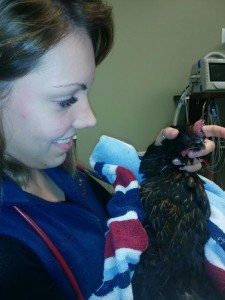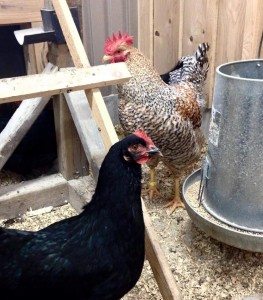It’s a Bummer – by Dr. Amanda Glew
Good fences make good neighbors. When you have an escaped horse, you realize the importance of this.
My mare Risk learned to escape from an early age – she would leave her mother on the other side of a fence when only 3 months old. So when she lead my small herd of horses down the road (and as I drove up in panic), she gave me the horse finger (looked me in the eye, bucked, and galloped off on the neighbours’ field), I realized that I needed better fencing. Not only have I placed 6 foot fences all around my perimeter, I have a strand of electrical fencing to help. The only part that is not “secured” is the entry to the horse trail. Fortunately, horses tend to prefer grazing in pastures, and are not as likely to wander into deep woods on their own. Cows, however, are a different beast.
We often leave our animals to graze in the front pasture when we are working at the barn. They love the change. I am still convinced they just get bored – the grass is the same, but they prefer to see things from a different perspective. But as I have learned, cows love to follow trails. Our cows were grazing out front one day. After ½ an hour, I looked around – no cows.
After a brief search of my property, I deduced they had wandered down the horse trail. I can only imagine if someone came upon two lumbering cows as they walked in the woods! I followed on my ATV, and finally in the distance, see my Ayrshire Ecstasy grazing in the neighbour’s hay field. Seeing a cow gallop away when you go to chase her makes me understand the necessity of border collies, and also made me giggle. They are not particularly graceful animals. Knowing the neighbour is hardly tolerant of large animals on his property, made me panic to remove these animals.
So now, we come to the chickens. Chickens are new this year, and I love them wandering the property. They sandbathe, they sit with the cows and peck off bugs, but with coyotes and fishers, we need an enclosed pen. It was when we were practising with height that we realized chickens can fly quite well. It’s easy for them to clear an 8 foot fence. It was when they had escaped that our neighbour’s dog (the same neighbour who doesn’t like my large animals), came over. A young shepherd, she delighted in chasing and terrorizing our chickens. She grabbed one by the rear, and partially ripped off her tail.
 I was at work when all of this happened. My niece (who lives at the barn) contacted me about the chicken. “Bring her in” I told her.
I was at work when all of this happened. My niece (who lives at the barn) contacted me about the chicken. “Bring her in” I told her.
On a busy Monday night, we examined the chicken – her anus was intact, but her abdominal wall compromised. My colleague, Dr. Gauthier, was up for the surgery. Yes, we anesthetized the chicken, plucked a few feathers, and sewed her up.
You don’t realize exactly how a chicken defecates until you have a problem. For the first few days, the chicken would let go of her feces and it would drip onto her lower feathers. Normally, their tail goes up so the poop flies away. She had a partial paralysis so this did not happen. Chicken poop on feathers makes a sticky, goopy mess. So she needed a daily bum wash, and we trimmed more feathers. We knew she was getting better when she passed an egg – at the clinic. One week later, her nerve function returned, and she resumed a passable normal defecation mode.
She has returned to the flock with a name: Bummer.

 Montreal Dog Blog Montreal's Online Dog Park
Montreal Dog Blog Montreal's Online Dog Park




